Shannon Amen
Chris Dainty
2019
| 15 min
2D and stop-motion animation, archival footage, and icemation
Selections and Awards
Official SelectionOttawa International Animation Festival, Ottawa, Canada (2019)
Official SelectionCalgary International Film Festival, Calgary, Alberta (2019)
Official Selection Festival du nouveau cinéma - FNC, Montreal, Canada (2019)
Official SelectionSommets du cinéma d'animation, Montreal, Canada (2019)
Official SelectionAnn Arbor Film Festival, Ann Arbor, Michigan, U.S. (2020)
Nominee for Canadian Screen AwardsCanadian Screen Awards, Toronto, Canada (2020)
Winner, Director – Non-Fiction Yorkton Film Festival, Yorkton, Saskatchewan, Canada (2020)
Official SelectionWe Are One: A Global Film Festival (2020)
Official SelectionInternational Animated Film Festival ANIMATOR, Poznań, Poland (2020)
“In your life I’m a fish with a smile on my face, so graceful on your land but I’m so out of place.”
Based on the words, music, and art of Shannon Jamieson, Shannon Amen unearths the frantic, passionate, and pained expressions of a young woman overwhelmed by guilt and anxiety as she struggles to reconcile her sexual identity with her religious faith.
Written and directed by Jamieson’s friend, Chris Dainty, the film is a multi-layered memoir that fuses archival footage and an array of animation techniques (including icemation) to reconstruct the complexity, instability, and sorrow that Shannon struggled with—issues that torment other LGBTQIA+ youth like her who face discrimination.
Inspired by true events, Shannon Amen is both elegy and therapy, as Dainty, like Jamieson, uses his art to come to terms with his own grief and confusion over the suicide of his friend. What emerges is not a tale of sorrow or a critique of a rigid faith, but an empowering story of great love, compassion, friendship, and the importance of unharnessed self-expression.
Produced by the National Film Board of Canada and made with the collaboration of Shannon’s friends and family, Shannon Amen is a potent social commentary that seeks to break through social stigmas by sparking discussion on the intersection of homosexuality and religion.
Based on the art of Shannon Jamieson, Shannon Amen unearths the frantic, passionate, and pained expressions of a young woman overwhelmed by guilt and anxiety as she struggles to reconcile her sexual identity with her religious faith.
Written and directed by Jamieson’s friend, Chris Dainty, the film is a multi-layered memoir that fuses archival footage and an array of animation techniques (including icemation) to reconstruct the complexity, instability, and sorrow that Shannon struggled with—issues that torment other LGBTQIA+ youth like her who face discrimination.
Shannon Amen is both elegy and therapy, as Dainty, like Jamieson, uses his art to come to terms with his own grief and confusion over the suicide of his friend. What emerges is not a tale of sorrow or a critique of a rigid faith, but an empowering story of great love, compassion, friendship, and the importance of unharnessed self-expression.
One-Liner & Two-Liner
Two-Liner
Shannon Amen unearths the passionate and pained expressions of a young woman overwhelmed by guilt and anxiety as she struggles to reconcile her sexual identity with her religious faith. A loving elegy to a friend lost to suicide.
One-Liner
Shannon Amen is a loving elegy to a friend lost to suicide and the passionate and pained artwork she left behind.
Description of Animation Technique
Shannon Amen is based on artist Shannon Jamieson’s paintings, music, and poetry. In order to capture the diversity and complexity of Shannon’s art, director Chris Dainty used a unique blend of techniques and formats, including 2D and stop-motion animation, archival footage, and “icemation.”
Shannon Amen is the first film to use icemation, a term coined by Dainty to describe an animation technique using full-scale ice sculptures. It combines stop-motion animation and puppeteering. It takes three days to create crystal-clear ice using a special ice-making machine. Once harvested, the 300-lb block of ice is transported to a massive freezer to be carved. In the freezer, Chris Dainty and his team of carvers use chainsaws to sculpt the main form of the body. A hand chisel is then used to help define finer details, like the face and hands. Each sculpture can take up to six hours to create.
“For me,” says Dainty, “the ice was something beautiful, like Shannon. She was a strong individual, yet she had a fragile side. Ice has a lot of different reflections depending on how you look at it, and I found there were many sides to Shannon. She hid her fragile side, but it was at her core. I also loved the fact that we were animating with an element of nature; I felt like it was something so raw to work with.”
The rest of the animation in the film is a mixture of traditional animation on paper and traditional digital 2D animation, with the design style taken from Shannon’s photos and artworks. Inspired by Shannon’s painting style, the crows in the film were hand-painted using thick black paint. More than 100 pieces of Shannon’s art were incorporated into this 15-minute film.
INTERVIEW WITH DIRECTOR CHRIS DAINTY
Following Shannon Jamieson’s tragic suicide, was there a particular moment that triggered your decision to make a film for your lost friend?
One of the last things I told Shannon was that I was going to make an animated film about her. It would have been a comedy film, though in a totally different context. I just always had this feeling that I wanted to make something about her. After she died, I saw so much of her art that I’d never seen before, and that triggered a sort of epiphany. There was just so much of her art that no one had seen; darker work that she hadn’t really shared with anyone. She had done a few art shows, but seeing the later stuff really blew me away. In one small piece, she had written “I feel guilty” over 100 times, in extremely small letters. This piece really shocked me as I had never really put all of the pieces together—that she had internally felt this guilt for who she was—since she projected such confidence.
And you approached the subject differently. Rather than just telling a sort of conventional narrative, you used her art as a guide and narrator.
I wanted to show as much of her as possible. There are over 100 pieces of her art in the film. There was just so much content. It’s so raw and authentic. She didn’t care what people thought of her art. It was just for her and she had an obsessive need to create.
You use an array of different techniques in the film: 2D drawing, live action, icemation. It must have been challenging not just to manage them but to then also ensure that they adapt to the style/tone of Shannon’s art.
From the start, I wanted to animate with ice. I had done a test of ice animation for the Ottawa International Animation Festival and I wanted to include the icemation technique in a film. I wanted to challenge myself, and the human body is as hard as it gets with ice. There was also 2D animation, some of it done traditionally on paper, some of it digitally. And then we went through a process of cleaning up every frame, and added Shannon’s artwork as textures overtop. Every single frame of the film features Shannon’s art in some way.
Shannon used her art as a form of therapy, or at least to unleash her hidden torments. Was making the film a form of artistic therapy for you as well?
Yeah, I dealt with a lot of internal demons. I had a lot of guilt about what I could have said and done. I saw her two days before and there was no indication that anything was wrong. I kept going back to the barn shoot I did of Shannon, which are some of the best photos I’ve ever taken and are included in the film. She had this idea of wanting me to photograph her nude and hanging for a stained-glass art project. We were just joking around, making experimental art with a noose and feathers, playing with the light coming in through the barn cracks. The photos I took were beautiful, but it was unsettling later when we realized that this same location is where she would take her life. Recreating this moment for the film allowed me to re-define this moment for myself. Making the film gave me time to re-evaluate what it meant to me and how I would look back at this chapter and the friendship we had.
Shannon Amen is not just your tribute to your friend; you also asked a number of Shannon’s friends and family to participate.
Shannon’s mom (Ellie Forbes) was involved as a creative consultant from the start. Shannon’s brother was involved too, although he was a bit more hands-off; he filmed the final shot of the film, paging through Shannon’s Bible. Ellie, though, was really involved from day one. We had a lot of conversations. We changed some scenes based on her feedback. She was like another representation of Shannon, and her feedback was extremely important.
We also had Lyndell Montgomery create beautiful and haunting violin music for the film. Lyndell and Shannon were friends, and Shannon really looked up to Lyndell as a positive lesbian role model, and musician. Lyndell was the last person to see Shannon alive. My direction to Lyndell was, just watch the film and improvise, let your emotions be your guide. We also had some darker atmospheric music pieces done by another one of Shannon’s friends, Brett Despotovich. I think Shannon would love the fact that her friends were involved.
Shannon Amen could be seen as a film about suicide and suffering, but it’s really a film about love. It’s less about Shannon’s death than it is about the vibrant life she led.
Her mom said to me that suicide did not define Shannon, and that really stuck with me. It is a part of her story, but I think that her art is the crux of the story. I was so blown away by her art. I looked at this as my way of taking the audience by the hand and introducing them to Shannon and her art. Through her art and her voice, I hope that people will want to know more about her.
As personal a film as Shannon Amen is, Shannon’s struggles are not uncommon. Many from the LGBTQ+ community have struggled to reconcile their sexuality with their religious beliefs. Shannon also battled some mental health issues. Is it your hope that the film might contribute to existing dialogues about both mental health and religion’s problematic views of sexuality?
Shannon was self-aware of her reality and the general issues that can arise from growing up in a religious community and being gay. I hope her art sparks conversation, as she perfectly captured the struggles and emotions that so many other youths have felt. Telling authentic, hard stories can create empathy so that the wider society can better understand what it must feel like to not be accepted, and how that can negatively affect one’s mental health.
Shannon Jamieson, the artist
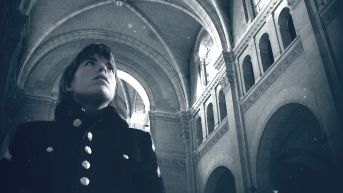
Shannon Jamieson, also known as Amen, was a multimedia artist from Hawkesbury, Ontario. Born in 1982, Jamieson was a graduate of Concordia University’s Faculty of Fine Arts. During her final year of study, she participated in an international exchange in Lyon, France, where she created art in Église du Bon-Pasteur, an abandoned 19th-century church. Her art has been shown in various solo and group shows in Montreal, as well as in Vankleek Hill and San Francisco. Jamieson died tragically at age 23 on June 12, 2006.
In 2007, The Post Amen Project, based on Jamieson’s last completed work, The Distortion of Light, was presented in Montreal. The exhibition, which featured photographs, sketches and assorted documentation, touched on themes that were frequently explored in Jamieson’s art: identity, the body, and religion’s often restrictive views on gender and sexuality.
Trailer
Clips
Making-of
Promotional Materials
Images
Loading...
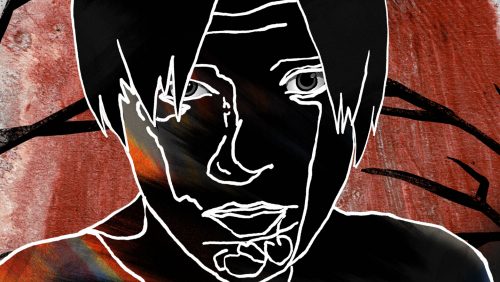
Download
Loading...

Download
Loading...

Download
Loading...

Download
Loading...
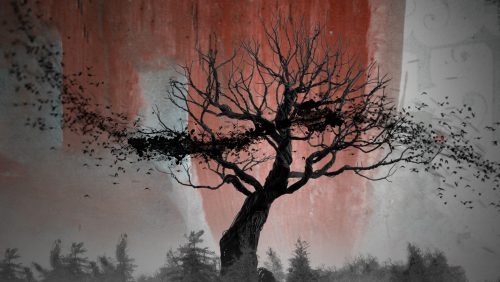
Download
Loading...
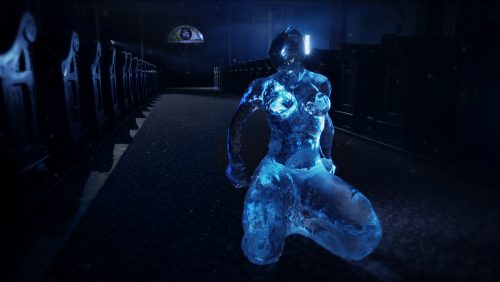
Download
Loading...

Download
Loading...
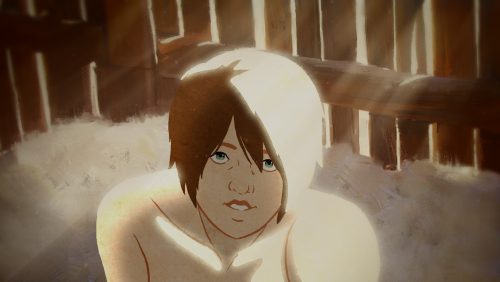
Download
Loading...
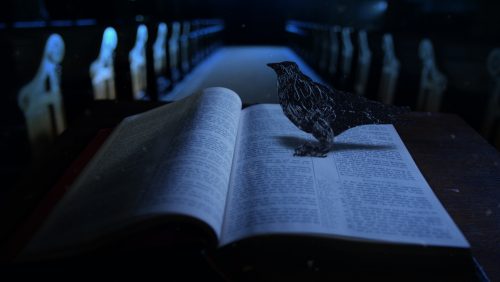
Download
Team
Chris Dainty
Director
Photo
Photo : Mitch Lenet
Maral Mohammadian
Producer
Photo
Michael Fukushima
Executive Producer
Photo
Photo : David Fine
Credits
Written and Directed by
Chris Dainty
Based on Writings, Art and Music by
Shannon Jamieson
Voice
Shannon Jamieson
Creative Consultant
Ellie Forbes
Line Producer
Jennifer Dainty
Sound Design
Sacha Ratcliffe
Storyboards and Animatic
Chris Dainty
Bradley Cayford
Fabian Jacobo Cuevas
Jeff Amey
Character Designs
Izzy Campbell
Elise Simard
Chris Dainty
2D Animation
David Seitz
Phil Lockerby
Hyun Jin Park
Andrew Doris
Lynn Scatcherd
Luc Chamberland
Sean Branigan
Chris Dainty
Rodolphe St-Gelais
Jamie Gallant
Stop-Motion Animation
Chris Dainty
Lynn Dana Wilton
Animation Clean-up
Izzy Campbell
Jennifer Dainty
Backgrounds
Fabian Jacobo Cuevas
Chris Dainty
Izzy Campbell
Tree Sculpture
Kenny Hayden
Ice Animation Team
Ice Carvers
Chris Dainty
Kevin Ashe
Antonio Baisas
Mowafak Nema
Jeremy Kuzub
Nathan McKeough
Ikuo Kanbayashi
Director of Photography
Karim Ayari
Camera Assistants
Matthew Delaney
Mitch Lenet
Promotional Photography
Mitch Lenet
Ella-Rose Swinimer
Ice Shoot Assistant
Marlee Mayors
Editing
Chris Dainty
Trevor Dixon Bennett
Compositing and VFX
Fred Casia
Elise Simard
Reference Video
Luc Chamberland
Izzy Campbell
Violin
Lyndell Montgomery
Recorded by
Jane Aurora (Arrival Sounds)
Electronic Music
Sacha Ratcliffe
“Come Fly With Me”
Performed by Michael Bublé
Courtesy of Reprise Records
By arrangement with Warner Music Group Film & TV Licensing
Written by Sammy Cahn and Jimmy van Heusen
Courtesy of Concord Music and Primary Wave
“Kangaroo”
Written by Shannon Jamieson
Performed by Lyndell Montgomery
“Soeur” / “Sahrana” / “Entropy”
Written and Performed by Brett Despotovich (Inchoate)
Foley
Karla Baumgardner
Assisted by Rod Thibeault
Foley Recording
Geoffrey Mitchell
Re-recording
Isabelle Lussier
Technical Director
Eloi Champagne
Technical Specialist – Animation
Randall Finnerty
Technical Coordination
Luc Binette
Maud Chayer
Titles Font
Shannon Jamieson
Titles Layout
Mélanie Bouchard
Online Editing
Serge Verreault
Denis Pilon
Studio Administration
Victoire-Émilie Bessette
Rosalina Di Sario
Senior Production Coordinator
Dominique Forget
Studio Coordinator
Barry Ahmad
Legal Counsel
Christian Pitchen
Marketing
Geneviève Bérard
Special Thanks
Emma Pankhurst
Caleb Jamieson
Erin Jamieson
Dainty Productions Inc.
Canadian Ice Carvers Society
St. Brigid’s Church
Toronto Animated Image Society
AstroplastiqueKara & Trevor Dainty
Paul & Angela Dainty
Kareena Dainty
Doug & Merri McBride
Becky Weston
Glen Jones
Julie & Petter Johansson
Janet Blatter
Ember Swift
Charlotte Fisher
Nico Rosenberg
Don McWilliams
Justine Pimlott
Jelena Popović
Theodore Ushev
Producer
Maral Mohammadian
Executive Producer
Michael Fukushima
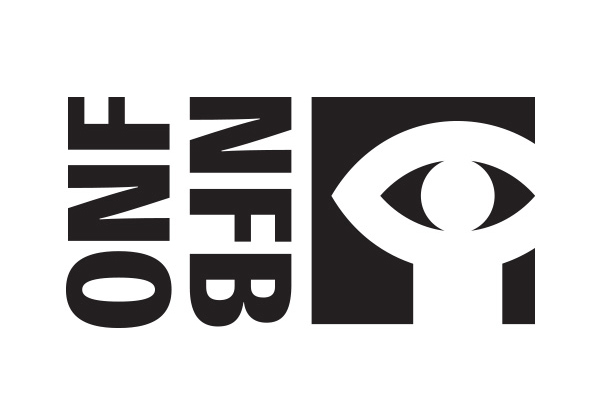
PRODUCED BY THE NATIONAL FILM BOARD OF CANADA © 2019
Media Relations
-
About the NFB
For more than 80 years, the National Film Board of Canada (NFB) has produced, distributed and preserved those stories, which now form a vast audiovisual collection—an important part of our cultural heritage that represents all Canadians.
To tell these stories, the NFB works with filmmakers of all ages and backgrounds, from across the country. It harnesses their creativity to produce relevant and groundbreaking content for curious, engaged and diverse audiences. The NFB also collaborates with industry experts to foster innovation in every aspect of storytelling, from formats to distribution models.
Every year, another 50 or so powerful new animated and documentary films are added to the NFB’s extensive collection of more than 14,000 titles, half of which are available to watch for free on nfb.ca.
Through its mandate, its stature and its productions, the NFB contributes to Canada’s cultural identity and is helping to build the Canada of tomorrow.